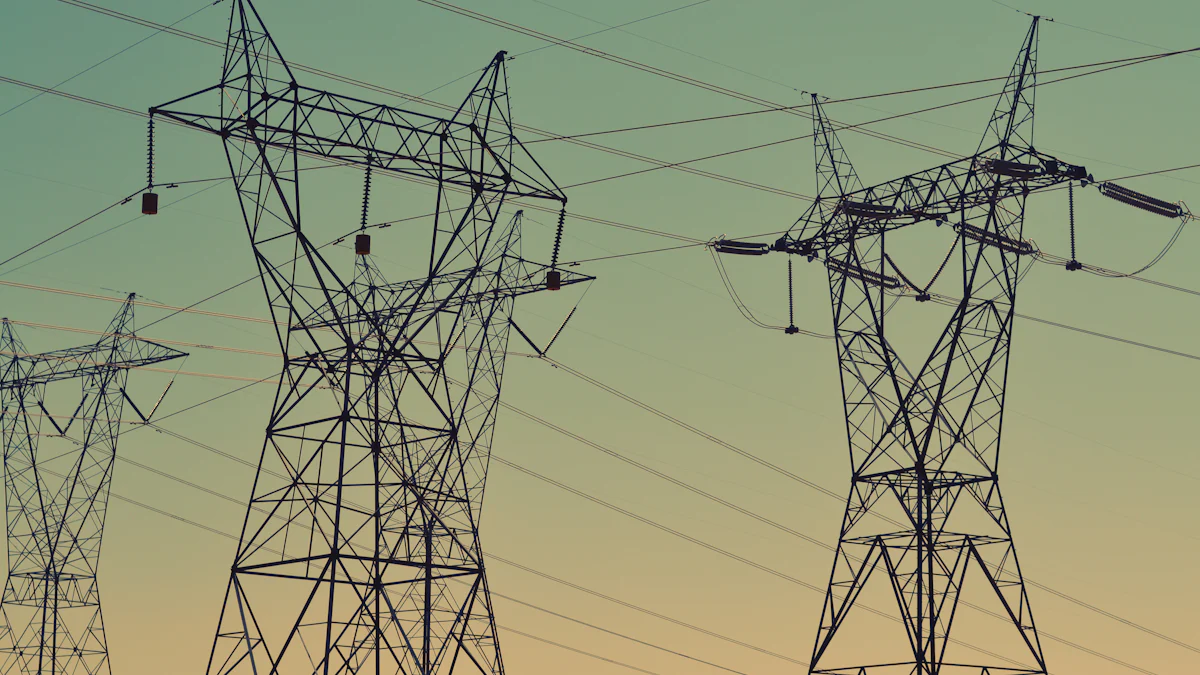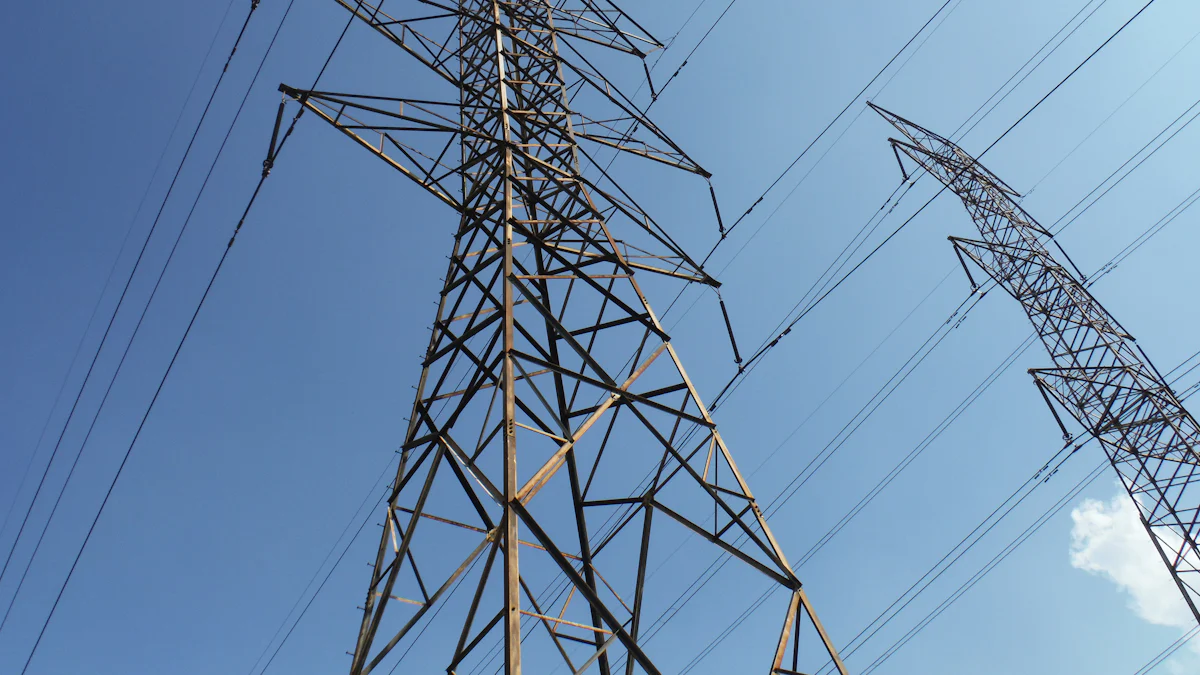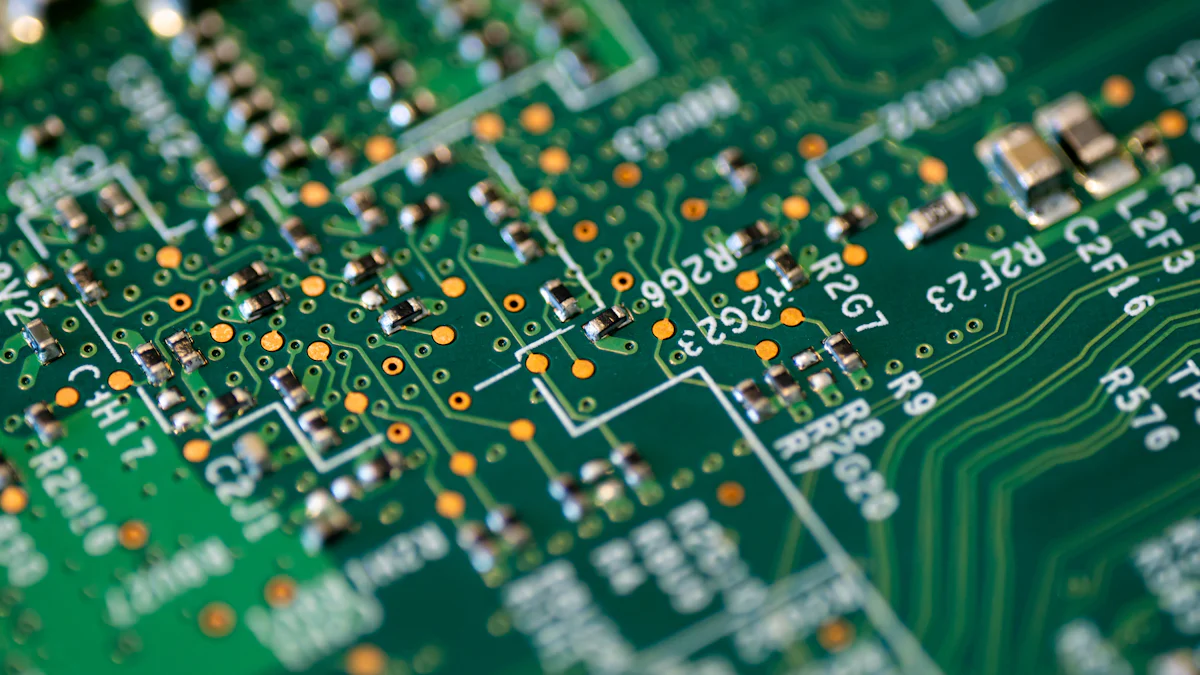Understanding Direct Current: Its History and Role in Modern Power Systems

Direct current meaning refers to the unidirectional flow of electric charge. Unlike alternating current, which changes direction periodically, direct current flows steadily in one direction. This characteristic makes it ideal for powering devices that require consistent energy, such as batteries and solar panels.
Direct current plays a vital role in modern electricity systems. It powers most low-voltage applications, including automotive systems and telecommunications. Historically, Alessandro Volta's invention of the Voltaic pile in 1800 marked the beginning of direct current's journey. Later, Thomas Edison utilized it to power his incandescent light bulb. Today, direct current remains essential in renewable energy systems and high-voltage transmission technologies.
Key Takeaways
Direct current (DC) moves in one direction without changing. It works well for batteries and solar panels.
DC is used in many devices like phones, laptops, and electric cars. It helps save energy.
High Voltage Direct Current (HVDC) sends power far away with less energy loss.
DC is important for renewable energy. It helps store and use energy better.
New DC systems, like car charging stations, are improving future energy use.
Direct Current Meaning and Principles
What Is Direct Current?
Definition and unidirectional flow of electric charge
Direct current refers to the steady, unidirectional flow of electric charge through a conductor. This flow occurs due to a direct voltage source, such as a battery or a DC generator. In a direct current circuit, the current moves from the positive terminal to the negative terminal, while electrons flow in the opposite direction. DC can be classified into two types: constant DC, which maintains a steady magnitude, and variable DC, which changes over time. Unlike AC, DC circuits are simpler to analyze because they do not involve time-dependent equations.
How DC differs from alternating current (AC)
The differences between direct current and alternating current lie in their functionality and applications. The table below highlights these distinctions:
Feature | Alternating Current (AC) | Direct Current (DC) |
|---|---|---|
Definition | Current that changes direction periodically | Current that flows in one direction only |
Generation | Produced by power plants using mechanical energy | Produced by batteries, solar cells |
Applications | Used in household power supply and industrial machines | Used in electronic devices like computers and phones |
Advantages | Efficient for long-distance transmission | More efficient for devices needing stable power |
Disadvantages | More dangerous at high voltages | Less suitable for long-distance transmission |
Applications of Direct Current
Everyday uses of DC in devices and systems
Direct current powers a wide range of everyday devices and systems. Batteries, solar power systems, and electric circuits in homes rely on DC. It is essential for telecommunication systems, emergency lighting, and automotive applications. Electric vehicles also operate on DC, as do most electronic devices like smartphones, laptops, and toys. High Voltage Direct Current (HVDC) systems enable efficient long-distance power transmission, making DC crucial for modern energy infrastructure.
Advantages and limitations of DC
Direct current offers several advantages. It is compatible with batteries and capacitors, making it ideal for electronic devices such as computers and televisions. DC promotes reduced energy loss in data centers and supports efficient energy storage in renewable systems. However, it has limitations. Interrupting a DC circuit can be challenging, leading to potential arcs and electric shocks. Additionally, DC systems require larger and more expensive conversion equipment compared to AC. Constant current flow can also cause corrosion in underground pipes and insulators.
The History of Direct Current

Early Discoveries and Innovations
Alessandro Volta and the invention of the Voltaic pile
Alessandro Volta's invention of the Voltaic pile in 1800 marked a turning point in the history of direct current. The Voltaic pile, the first electrical battery, demonstrated that electricity could be generated through chemical reactions. This device provided a continuous electric current to a circuit, laying the foundation for modern direct current systems. Volta's work not only advanced the field of electrochemistry but also inspired future innovations in electrical technology.
Development of DC generators and motors
The development of direct current generators and motors followed Volta's groundbreaking invention. Early DC generators converted mechanical energy into electrical energy, enabling the practical use of direct current in various applications. Motors powered by direct current became essential for industries, driving machinery and equipment. These advancements established direct current as a reliable source of energy for emerging technologies.
Thomas Edison and the War of the Currents
Edison's advocacy for direct current
Thomas Edison played a pivotal role in the promotion and development of direct current technology. He constructed extensive power grids to supply direct current to homes and businesses, making electricity accessible to the public. Edison's invention of the practical light bulb further demonstrated the potential of direct current. His efforts laid the groundwork for the widespread adoption of electricity, showcasing the practicality of direct current systems.
Nikola Tesla and the rise of alternating current
The war of the currents highlighted the rivalry between Edison and Nikola Tesla. Edison championed direct current, emphasizing its safety and reliability. Tesla, along with Westinghouse, advocated for alternating current, which could transmit electricity over long distances more efficiently. Edison attempted to discredit alternating current through public demonstrations of its dangers. However, Tesla and Westinghouse triumphed at the 1893 World's Fair, showcasing the advantages of alternating current. The construction of the Niagara Falls hydroelectric plant solidified alternating current's dominance, marking a significant shift in the history of electricity.
The Evolution of Direct Current
Decline of DC in favor of AC
The rise of alternating current led to the decline of direct current in large-scale power systems. Alternating current's ability to transmit electricity over long distances made it more suitable for widespread distribution. Direct current, limited by its range, became less prominent in public power grids. However, it remained essential for specific applications, such as batteries and electronic devices.
Resurgence of DC in modern power systems
In recent years, direct current has experienced a resurgence in modern power systems. Renewable energy sources like solar panels generate direct current, making it a key component of sustainable energy solutions. High Voltage Direct Current (HVDC) technology enables efficient long-distance power transmission, bridging the gap between renewable energy generation and consumption. Direct current continues to play a vital role in shaping the future of energy systems.
The Role of Direct Current in Modern Power Systems

Renewable Energy and Direct Current
Solar panels and DC generation
Solar panels generate direct current by converting sunlight into electricity through photovoltaic cells. This process produces a steady flow of electric charge, which makes direct current ideal for renewable energy systems. Solar panels connect to inverters that convert direct current into alternating current for household use. However, many devices, such as LED lights and electric vehicles, can operate directly on DC power. This reduces energy loss during conversion and improves efficiency. Direct current plays a crucial role in harnessing solar energy, making it a cornerstone of sustainable energy solutions.
Battery storage and energy efficiency
Batteries store energy in the form of direct current, making them essential for renewable energy systems. They provide a reliable backup during periods of low energy generation, such as cloudy days or nighttime. Direct current circuits in batteries ensure consistent energy flow, which is critical for powering devices and systems. Energy storage solutions, such as lithium-ion batteries, enhance the efficiency of renewable energy systems by reducing reliance on traditional power grids. This integration of direct current and batteries supports the transition to cleaner energy sources.
High Voltage Direct Current (HVDC) Technology
Long-distance power transmission
High-voltage direct current technology enables efficient long-distance power transmission. Unlike alternating current, direct current transmission minimizes energy loss over vast distances. HVDC systems are more environmentally friendly and support the globalization of power grids. They also improve the stability and reliability of the electric power industry. By integrating remote renewable energy sources into the grid, HVDC technology ensures a steady supply of electricity to urban and industrial areas.
Examples of HVDC projects worldwide
Several HVDC projects demonstrate the potential of this technology. The Pacific DC Intertie in the United States transmits electricity between Oregon and California, covering over 800 miles. In Europe, the NordLink project connects Norway and Germany, facilitating renewable energy exchange. These projects highlight the efficiency and scalability of high-voltage direct current systems in modern power grids.
Microgrids and Decentralized Systems
DC in small-scale and off-grid applications
Direct current is vital for microgrids and off-grid applications. Small-scale systems, such as residential solar setups, rely on direct current circuits for efficient energy distribution. Off-grid communities use DC power to operate essential devices, including lighting and communication systems. These applications demonstrate the versatility of direct current in decentralized energy solutions.
Benefits for rural and remote areas
Direct current offers significant benefits for rural and remote areas. It supports energy independence by enabling localized power generation and storage. DC systems are easier to install and maintain, making them ideal for regions with limited access to traditional power grids. By providing reliable electricity, direct current improves the quality of life in underserved communities and promotes sustainable development.
Why Direct Current Remains Relevant
Integration in Modern Energy Systems
Role of DC in smart grids and energy efficiency
Direct current plays a critical role in modern smart grids. It enables efficient energy transfer between renewable energy sources, storage systems, and end-users. Smart grids rely on direct current to integrate solar panels and batteries seamlessly into the energy network. This integration reduces energy loss during transmission and conversion. DC circuits also enhance energy efficiency by directly powering devices like LED lighting and electric motors without requiring conversion to alternating current.
The use of direct current in smart grids improves grid stability. It allows for better control of energy flow, ensuring a reliable supply of electricity. Additionally, DC-based systems support the development of microgrids, which operate independently or in conjunction with the main grid. These systems provide localized energy solutions, reducing dependency on centralized power plants.
Sustainability and decentralized energy solutions
Direct current contributes to sustainability by supporting decentralized energy solutions. Renewable energy systems, such as solar and wind, generate direct current. This makes DC ideal for connecting these sources to local grids or standalone systems. Decentralized grids powered by direct current reduce transmission losses and promote energy independence.
In rural and remote areas, direct current enables access to electricity through off-grid systems. These systems use DC circuits to power essential devices like water pumps and communication tools. By reducing reliance on fossil fuels, direct current supports the transition to cleaner energy sources and a more sustainable future.
Future of Direct Current Technology
Innovations in DC infrastructure
Recent innovations in direct current infrastructure are shaping the future of energy systems. High-Voltage Direct Current (HVDC) technology has advanced significantly, enabling efficient long-distance electricity transmission. HVDC minimizes energy loss compared to traditional AC systems, making it essential for integrating renewable energy into the grid.
Other advancements include the expansion of DC supercharging infrastructure for electric vehicles. These systems allow for rapid charging while reducing power losses during AC to DC conversion. Innovations in DC cables and hybrid AC-DC systems are also improving energy efficiency in data centers and power stations. These developments highlight the growing importance of direct current in modern energy infrastructure.
Applications in electric vehicles and data centers
Electric vehicles rely on direct current for their operation. Batteries in EVs store energy as DC, which powers the vehicle's motor. The expansion of DC charging stations ensures faster and more efficient energy transfer, supporting the widespread adoption of electric vehicles.
Data centers also benefit from direct current technology. DC circuits reduce energy loss during power conversion, improving the overall efficiency of these facilities. By adopting direct current systems, data centers can lower operational costs and reduce their environmental impact. These applications demonstrate the versatility and relevance of direct current in addressing modern energy challenges.
Direct current has shaped the energy landscape through its historical milestones and modern applications. Alessandro Volta's invention of the Voltaic pile in 1800 marked the beginning of its journey. Andre-Marie Ampere's work in 1820 clarified its unidirectional flow. Thomas Edison demonstrated its practicality with the incandescent light bulb in 1882. By the 1950s, high-voltage direct current (HVDC) systems revolutionized long-distance power transmission.
Today, direct current remains essential in renewable energy systems, HVDC technology, and decentralized grids. It supports efficient energy transfer, grid resilience, and the integration of renewable sources. Future advancements, such as meshed offshore grids and enhanced power electronics, promise to expand its impact on the world. Direct current continues to drive innovation, paving the way for a sustainable and efficient energy future.
FAQ
What is the main difference between direct current (DC) and alternating current (AC)?
Direct current flows in one direction, while alternating current changes direction periodically. DC is ideal for devices requiring stable power, such as batteries and electronics. AC, on the other hand, is better suited for long-distance power transmission due to its efficiency.
Why is direct current important for renewable energy systems?
Renewable energy systems, like solar panels, generate electricity as direct current. DC allows efficient energy storage in batteries and reduces energy loss during conversion. This makes it essential for integrating renewable energy into modern power grids and decentralized systems.
How does High Voltage Direct Current (HVDC) improve power transmission?
HVDC minimizes energy loss over long distances by transmitting electricity as direct current. It also enhances grid stability and supports the integration of renewable energy sources. HVDC systems are more efficient than traditional AC systems for connecting remote power generation sites to urban areas.
Can direct current power everyday devices?
Yes, most electronic devices, such as smartphones, laptops, and LED lights, operate on direct current. Batteries, which store energy as DC, power these devices. Many appliances convert AC from wall outlets into DC for internal use.
What are the advantages of using direct current in microgrids?
Direct current simplifies energy distribution in microgrids. It reduces energy loss during conversion and supports localized power generation. DC systems are easier to install and maintain, making them ideal for rural and off-grid applications.
See Also
Exploring Integrated Circuits in Today’s Technology Jobs
Key Historical Developments in Integrated Circuit Technology
Comparing Inverters and Transformers: Functions and Uses
Three Key Differences Between USB-C and Traditional USB
Impact of Passivation Materials on IGBT Performance and Lifespan
